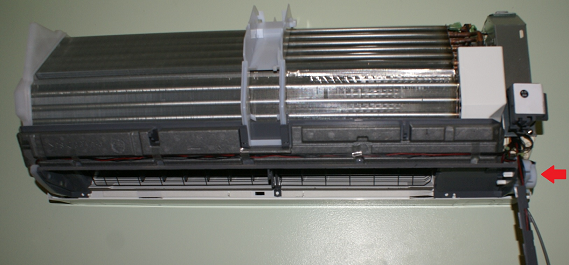Electrical safety - Cleaning split system air-conditioners
This information bulletin outlines the preventative measures to avoid the risk of electric shock when cleaning split system air conditioners.
A comprehensive risk assessment and a safe work method statement must be prepared and utilised in each case prior to starting work as live electrical components may be exposed during the cleaning process.
Is cleaning split system air conditioners considered electrical work?
No. If effective and safe electrical isolation and safe work practises as outlined below are followed, then cleaning split system air conditioners is not considered to be electrical work.
Inherent electrical risks
All air conditioners regardless of their make or model contain live electrical parts which if exposed may present a risk of electric shock, explosion or fire. Split system air conditioners present the same risks.
Removing the plastic covers from a split system head unit to clean the evaporator unit may expose live parts.
Therefore, it is important to ensure that the electricity supply has been isolated at the power source before commencing work.

Electrical isolation is the key to safety
Depending on the model of air conditioner there are generally three ways to electrically isolate the head unit.
- Turn off the circuit breaker. If the air conditioner is fed from a dedicated circuit at the switchboard, isolating supply by turning off the circuit breaker and placing a danger tag on it will ensure electrical safety.
- Unplug the air conditioner. Small air conditioner units may be plugged into a power point, isolation is as easy as unplugging the unit and placing a danger tag on the power cord.
- Larger air-conditioner units will have an isolator mounted either on or near the condenser unit, which is usually located outside, you may need a ladder to reach it, turning off the isolator and applying a danger tag to it will ensure electrical safety.



Testing to ensure the appliance is de-energised
A no contact test pen is a useful addition to your tool kit. It provides a way of testing for mains voltage electricity without touching live parts. All electrical wholesalers stock them. Always test them on a known live source to ensure they are functioning normally before testing for de-energisation.

Caption: A fluke brand no contact test pen
Are cleaning solutions safe to use around electrical components?
As long as the electrical components are de-energised then cleaning solutions pose no risk as long as the electrical components are dry prior to re-energisation, however aqueous cleaning solutions are electrically conductive, spraying them onto live electrical components has caused explosions, fires and shocks which have been investigated by NT WorkSafe in the past. Therefore, it is extremely important to ensure the electricity supply has been isolated prior to starting work.